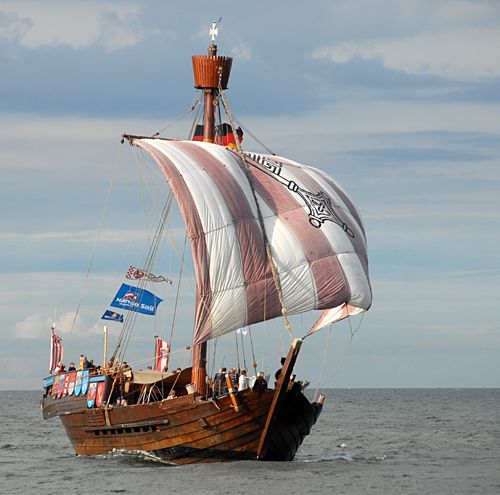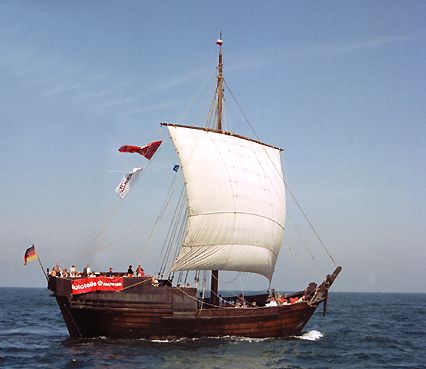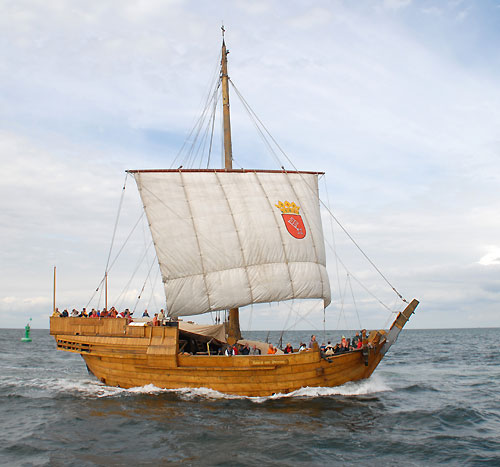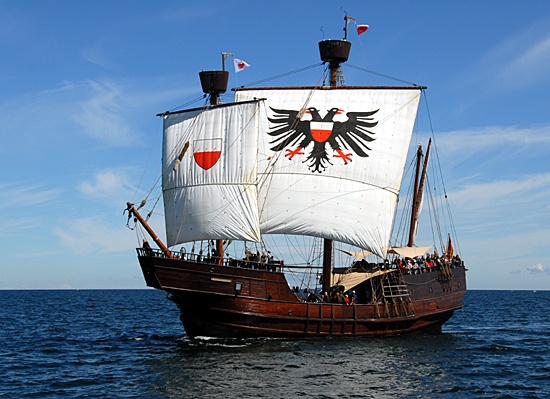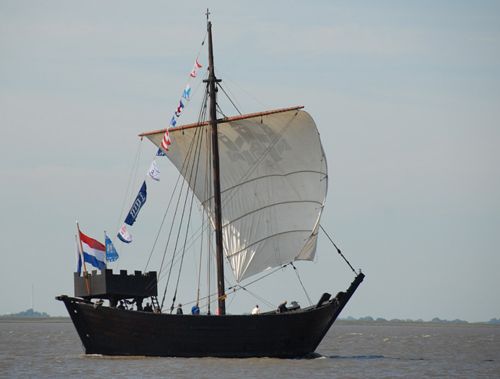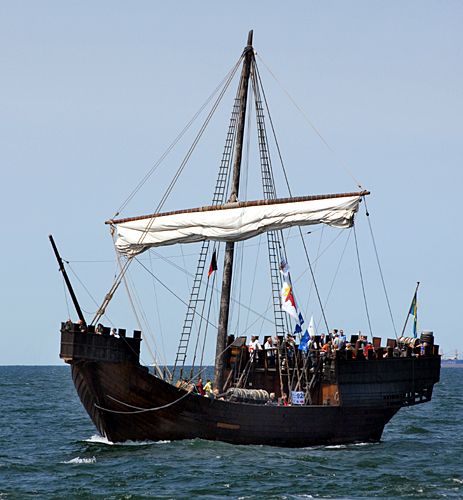Last update:
Festivals of medieval sailing ships

Hanseatic cogs on the Baltic Sea

Sailing Hanseatic cogs

Parade of Hanseatic cogs at the festival 2006

Hanseatic cogs and a carvel

Crossing from Wismar to Rostock

Hanseatic cogs in Rostock

Sail-in of the Hanseatic cogs

Parade on the river Warnow

Hanseatic cogs on the river Warnow
The fact that the Hanseatic city of Wismar is very keen to present its maritime past and present is something that anyone can see who visits one of the annual
maritime events such as the Schwedenkopfregatta or the cruise of the traditional ships with lights or the harbour festival, or who has just visited the the old habour
and strolled along the quay walls.
On the occasion of the inauguration of the Hansekogge "Wissemara" the Wismeranians organized something very special in 2006. Ship friends had dreamed long to
experience today's reconstructions of medieval sailing ships together on the water. The first cog meeting took place in Wismar in 2006.
The Hanseatic cogs "Ubena von Bremen", the "Roland von Bremen" and the "Hansekogge" from Kiel accompanied the Baltic Hanseatic cog "Wissemara"
on her maiden voyage to Rostock. The carvel "Lisa von Lübeck" fitted very well into the image of medieval sailing ships.
The gatherings of medieval sailing ships subsequently became a small tradition. In 2007 they met again in Wismar. The organizers, the Hansekontor Wismar and the Förderverein Poeler Kogge,
had prepared many beautiful highlights, such as a "regatta" for the Hanseatic cogs, the cog market and music as well as lots of gun salutes from historic cannons. In 2008 they
met in the Hanseatic city of Lübeck. The "Kamper Hanze Kogge" from the Netherlands and the "Twekamp af Elbogen" (today "Red Devil") from Sweden have been there.
In 2009 a jubilee was celebrated in Wismar. In 1259 the Hanseatic cities of Wismar, Rostock and Lübeck signed an assistance pact to protect merchants from pirates and bandits. 750 years later
it was remembered with a 3-day festival, which also included 7 replicas of medieval sailing ships. In 2011, the Hanseatic City of Kiel was the host for the ships and many visitors.
Sailing ships in the Middle Ages
How did they look like, the sailing ships of the Hanseatic period?Today's knowledge of sailing ships that were used by Hanseatic merchants before the 16th century is only due to wreckage and a few representations on seals and coins or gathered in churches. Simple building descriptions and construction drawings have only been handed down from the 16th century. Findings about sailing characteristics were rediscovered through experiments with replicas of these ships. In addition to the planned use and the shipping area, the decisive factors for the ship's construction were also the financial possibilities of the client, regional building tradition during the construction period and influences from other regions. That led to a different appearance of today's replicas. So there is no uniform description for the ship types Hanseatic cog or carvel. The replicas and descriptions of ship archaeologists always refer to one of the wreckage finds, which could be assigned to a construction period and area through dendrochronological investigations. The diversity of the medieval sailing ships, which we often collectively refer to as cogs, is a result of their adaptation to sailing areas and transport tasks as well as technical innovations in shipbuilding.
Literature
Thomas Förster
"Schiffe der Hanse",
Hinstorff Verlag, Rostock, 1. Ausgabe, 2009, ISBN-13: 978-3356013368
Uwe Baykowski
"Die Kieler Hansekogge. Der Nachbau eines historischen Segelschiffes von 1380",
RKE-Verlag, Kiel, 1995, ISBN-10: 3924381348, ISBN-13: 978-3924381349



